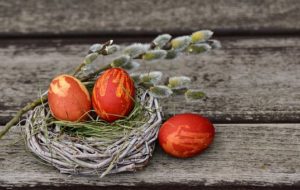 Our girls have been blessed with amazing grandparents. They’ve had grandmas and grandpas that did all the cool things their dad and I sometimes lacked the energy to pull off. I never decorated Easter eggs until we had grandkids of our own. Never needed to because—you guessed it—the grandparents took care of Easter egg hunts, Christmas stockings, and even birthday cakes.
Our girls have been blessed with amazing grandparents. They’ve had grandmas and grandpas that did all the cool things their dad and I sometimes lacked the energy to pull off. I never decorated Easter eggs until we had grandkids of our own. Never needed to because—you guessed it—the grandparents took care of Easter egg hunts, Christmas stockings, and even birthday cakes.
What did my husband and I do? We made holidays memorable in a little more…unique ways. Our girls celebrate Valentine’s Day on February 15th to this day – because candy is 50% off. We observed the Advent of Christmas from December 1-24, opening a small gift each day after reading a passage of Scripture. And birthdays? Well, we sort of had “birthday month.” Our sons-in-law reap the hardship of needing to spoil their wives for the entire month of their birthdays because of the traditions we began when they were children (so sorry, Brad and Jason).
If I gave my thoughts over to regret—which I try hard not to do—I might spend a moment or two wishing we’d incorporated more teaching on Passover with our Easter traditions. Research into Old Testament celebrations of Passover has opened my eyes to the richness of our Judeo-Christian heritage.
Miriam’s Perspective
We find the first Passover in Exodus, when Yahweh informed Moses of the tenth and final plague He planned to inflict 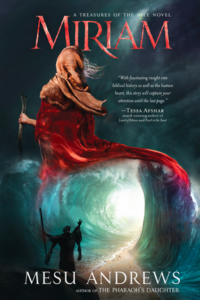 on the hard-hearted Pharaoh and every Egyptian who refused to believe in the God of the Israelites.
on the hard-hearted Pharaoh and every Egyptian who refused to believe in the God of the Israelites.
“I will pass through Egypt and strike down every firstborn of both people and animals, and I will bring judgment on all the gods of Egypt. I am the Lord. The blood will be a sign for you on the houses where you are, and when I see the blood, I will pass over you.” Exodus 12:12-13
Perhaps one of the most fascinating things I learned while researching Miriam (and there were MANY fascinating things about this book of miracles), was that a single lamb could feed at least fourteen people. Since Yahweh told them to eat all the meat by morning—or burn it up—the Israelites were forced to come together during the most terrifying event the world had ever known.
“If any household is too small for a whole lamb, they must share one with their nearest neighbor, having taken into account the number of people there are. You are to determine the amount of lamb needed in accordance with what each person will eat.” Exodus 12:10
If you could have no Easter-meal leftovers, who would you invite to this year’s celebration? Why not invite them now?
Hezekiah’s Question
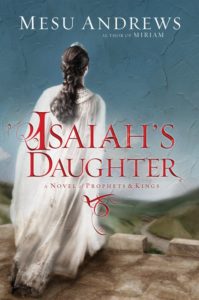 There are five great Passover feasts recorded in Scripture:
There are five great Passover feasts recorded in Scripture:
- The original one in Egypt (Numbers 33:3)
- At Gilgal before taking Jericho (Josh. 5:10)
- At the beginning of Hezekiah’s reign (2 Chr. 30:1)
- During King Josiah’s reign (2 Chr. 35:1; 2 Chr. 35:16)
- When the exiles returned from Babylon (Ezra 6:19)
Each of the last four occurred at a time of spiritual renewal among God’s people, a time of recommitment after they’d been disobedient to Him. Sin of any kind requires atonement, the currency of which is blood.
“Why blood?” Hezekiah asked in Isaiah’s Daughter. I didn’t know the answer, so neither did Isaiah. (LOL!) But I do know God says blood is about life, not death.
“For the life of a creature is in the blood, and I have given it to you to make atonement for yourselves on the altar; it is the blood that makes atonement for one’s life.” Leviticus 17:11 (emphasis added)
In God’s sight, blood is a stream of life working with His breath to mobilize flesh and bones. I see blood and think: injury, pain, death. God sees blood and thinks: atonement, forgiveness, life.
Did you know Easter eggs were originally colored solid red, meant to signify the LIFE and BLOOD of Jesus Christ? Will you look at Easter eggs—and OT sacrifice—differently this year?
Jehoiada’s Sacrifice
In the Shadow of Jezebel was perhaps the most difficult book I’ve written because of the dark characters, Jezebel 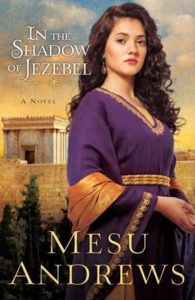 and Athaliah. But I also learned so much about Old Testament sacrifice and the priesthood—its process and purpose. I learned for the first time how heavy the high priest’s mantle was and how utterly impossible was his job.
and Athaliah. But I also learned so much about Old Testament sacrifice and the priesthood—its process and purpose. I learned for the first time how heavy the high priest’s mantle was and how utterly impossible was his job.
“Make a plate of pure gold and engrave on it as on a seal: holy to the Lord…It will be on Aaron’s forehead, and he will bear the guilt involved in the sacred gifts the Israelites consecrate, whatever their gifts may be. It will be on Aaron’s forehead continually so that they will be acceptable to the Lord.” Exodus 28:36, 38
Numbers 18:1-5 outline further responsibilities for Aaron, the priesthood, and the Levites. Why is all this important? Because unless we understand the absolute impossibility of humanly bearing the priests’ responsibility, we can’t fathom the relief of God’s perfect High Priest.
“Every high priest is appointed to offer both gifts and sacrifices…They serve at a sanctuary that is a copy and shadow of what is in heaven. This is why Moses was warned when he was about to build the tabernacle: ‘See to it that you make everything according to the pattern shown you on the mountain.’ But in fact the ministry Jesus has received is as superior to theirs as the covenant of which he is mediator is superior to the old one, since the new covenant is established on better promises.” Hebrews 8:3,5-6
Without understanding these Old Testament concepts, the New Testament is hollow and powerless. If, however, we realize the progression of Genesis to Revelation: Passover to Resurrection to Second Coming; then ALL of Scripture becomes clearer.
“Unlike the other high priests, [Jesus] does not need to offer sacrifices day after day, first for his own sins, and then for the sins of the people. He sacrificed for their sins once for all when he offered himself.” Hebrews 7:27
The Bible becomes a single, well-fashioned story that progresses through history with a single focus—the redemption of humankind for the glory of the God who created us.

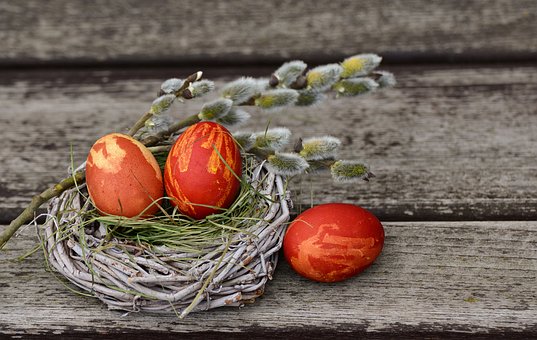
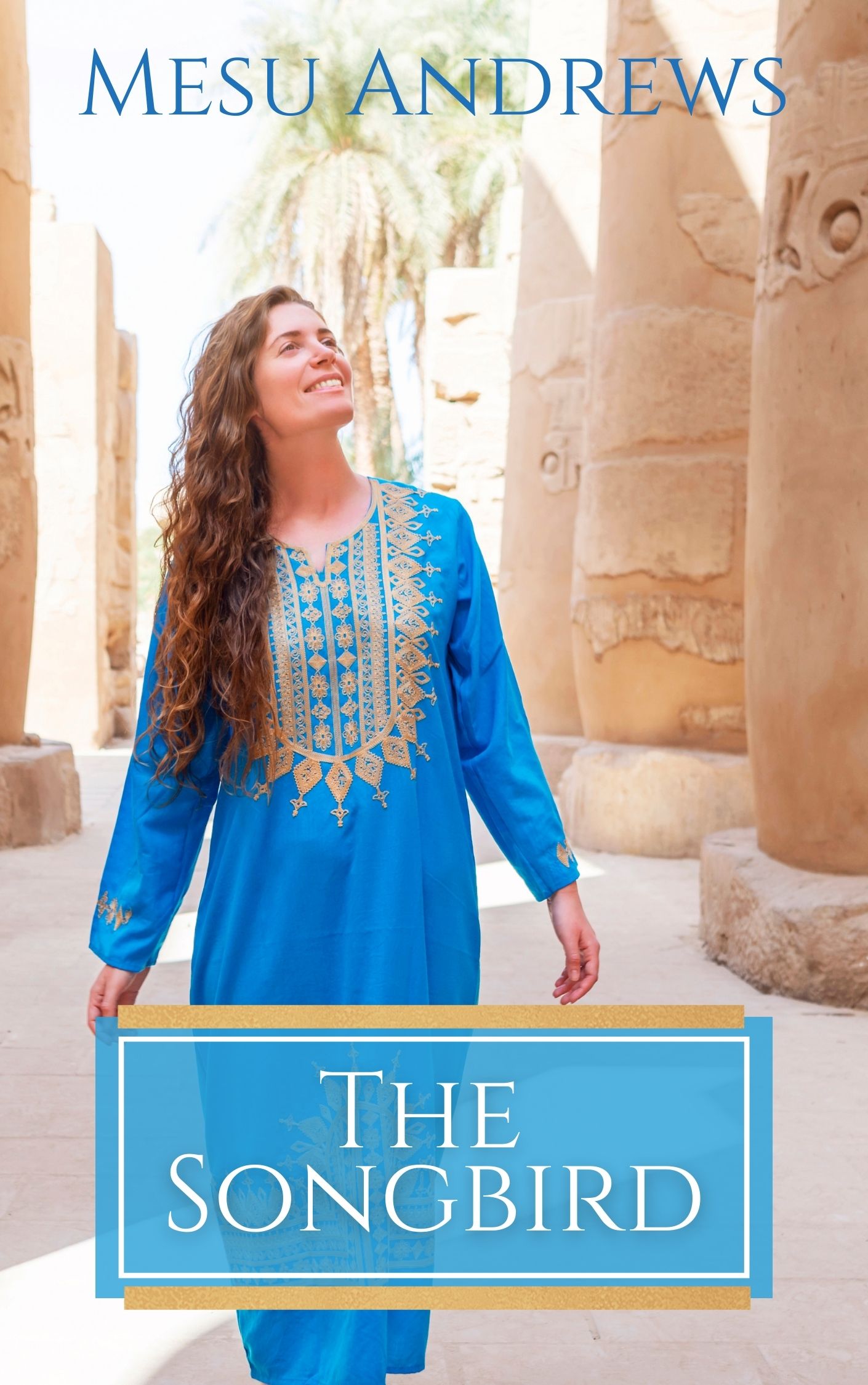

Comments 14
You mentioned that a lamb feeds 14 people and there wasn’t to be any leftovers. We have eaten lamb for Easter several times and there was leftovers. We all enjoyed the lamb while it was fresh but the leftovers we didn’t like. I always thought it strange that we didn’t like the leftovers and perhaps it’s because the Israelites weren’t to have any leftovers for Passover so now lamb leftovers aren’t as good as the original meal. Perhaps it’s just my tastebuds?
Author
I love this, Sarah! You know, many of the laws Yahweh gave the Israelites in the wilderness were very practical–sanitation, getting rid of mold, medical insights, etc. Maybe lamb simply isn’t good on the second day! More likely, it was the beginning of their obedience training. 😉
I had never heard of Easter eggs originally being colored red! I will definitely remember that this Easter with my children. Thanks for sharing that!
Author
I’d never heard it either, Beth. Fascinating, huh?
I’m not too familiar with the Old Testament, but as I read Hebrews 9 and was sensetive to the Spirit I was in tears as understanding came to me. Verse
19 When Moses had proclaimed every command of the law to all the people, he took the blood of calves, together with water, scarlet wool and branches of hyssop, and sprinkled the scroll and all the people.
I was like wasn’t hyssop what they used for Jesus on the cross? So I looked it up and yes, right before Jesus said, ‘It is finished’ and took his last breath on the cross (john 19:28-30), the roman soilders offered him to drink wine vinegar on a sponge at the end of a stalk of hyssop.
So I looked up hyssop and apparently it is a plant/herb from the mint family that has cleansing, medicinal and flavor properties. The branches were used in the Passover to put blood on the post (exodus 12:22), it was used in ceremonial cleansing of healing with blood of a clean bird, sprinkled on a person healed of a skin decease before he can return to camp (lev 14:1-7), and to purify a house that contained mold (lev 14:33-53).
I believe that it was symbolic that when Jesus was on the cross as our blood sacrifice, they used hyssop then he says ‘it is finished’. The sacrifice was complete with hyssop. This was a sign of purification for us not only for our forgiveness of sins but, also for the healing of our souls and bodies. With his stripes we are healed (Isaiah 53:5). We don’t have to be cast out or isolated with guilt or pain, like the people with leporsy did, we are made whole. This was Our ceremony of cleansing of healing and purification of our ‘houses’ that contained mold. In our spiritual life we may have gotten mold or sick, but he renews us not only physically but spiritually and sets us free from our slavery to sin.
God is good!
Author
YES! YES! YES! You go, Sistah! Nearly every moment of Jesus’ last WEEK is symbolic in some way, which is why our study and understanding of the Old Testament is soooooo important–not to live by its example, but to deepen with which we regard our Savior! Bless you, sweet girl!
Amen! I’m learning that as I grow in his word. The OT points us to Jesus and its amazing and beautiful when we can see the full picture and have those ‘Aha’ moments :). GOD BLESS YOU!
Author
Thanks, Jessica! 😉
wow what a wonderful post. thanks for all the information. and to the commentors for their added information.
Author
Aren’t these comments fantastic today! Thanks EVERYONE!! Keep ’em coming! Y’all are amazing!
I am so thankful that I live under the redeeming blood of Jesus rather than the rules of the Old Testament! Thank you for the great information everyone!
Author
Amen, Linda! We were given the Law (and the OT) to magnify our appreciation–for our need, for God’s goodness, for grace, for JESUS! I love how y’all are ministering to each other here. Blessings on ya!
The original blood sacrifice was when God made clothes out of skins for Adam and Eve after they sinned. Before that, nothing in the garden died. Because of their sin, the first animal was slain to cover them.
It amazes me that God knew exactly how sinful we would be, but He chose to create us anyway. He knew the sacrifices He would make to provide atonement for our sin. He created us in His image, knowing we would not be able to live up to His divine standards. We were His greatest creation, but yet also the worst. But despite all the sin, He loves us anyway.
His grace is beyond comprehension.
Author
God’s Sovereignty is and has always been one of my favorite topics, Connie! And, yes, the first sacrifice for sin was made BY GOD–as was the last sacrifice for sin. How cool is that!?